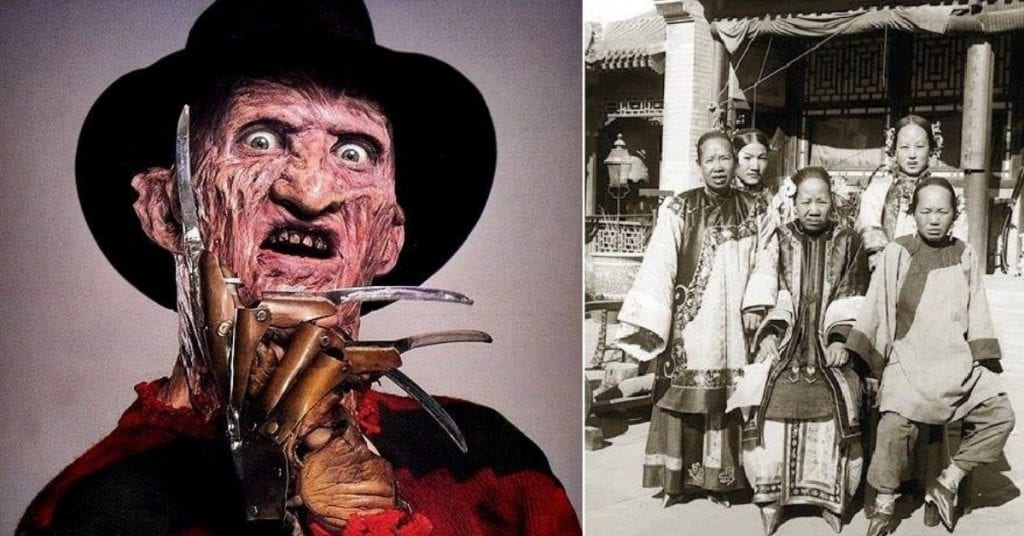
Written and directed by Wes Craven, the horror classic A Nightmare on Elm Street is considered to be one of the most powerful scary movies of the 20th century. In the movie, the spirit of a shivering child murderer appears in teenagers' dreams and causes them never to wake up again. It's an amazing plot for a horror flick that's meant to make you afraid of going to bed at night. But what would you say if we told you that a series of dreadful real-life events inspired Wes Craven's story?
While Freddy Krueger's burnt face and sharp metal claws are a bonafide Hollywood product, there's some truth to Wes Craven's out-of-this-world plot. And if you thought the movie was scary, you're in for a nightmarish journey of unexplained, bone-shivering events. It all took place in the '80s, in the aftermath of one of Southeast Asia's bloodiest wars. And the facts we're about to present you are bound to forever change your perception of the effect our minds, superstitions, and traumas can have on our lives. It's not magic, but it will certainly feel like it.
Throwback to 1975
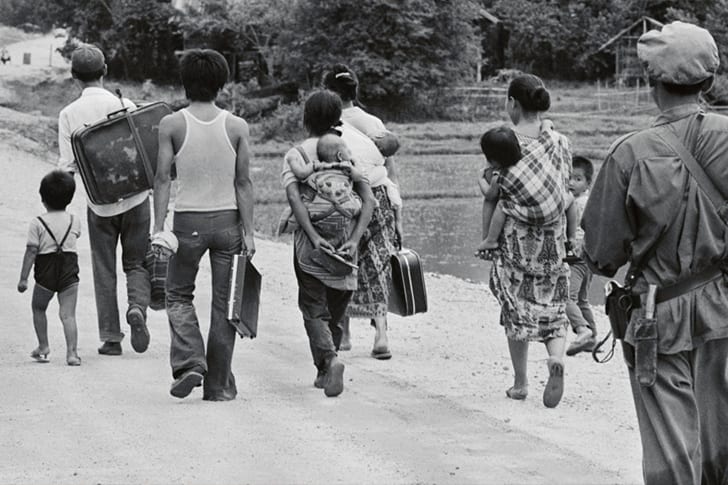
Strangely enough, our story doesn't start in the sunny streets of Hollywood, nor even in the gnarly America of the '80s. It begins in Laos, a small country in Southeast Asia. Even though the tragic events that took place there can be traced back to the beginning of the Laotian Civil War, in 1959, we're interested in something that happened in May 1975.
The Hmong people who lived in the war-torn country of Laos were evacuated to the U.S. with the CIA's support. But why did the Americans decide to intervene in a Southeast Asian civil war, and why were they so keen on helping the Hmong?
CIA's Secret War

During most of the 20th century, the U.S. spent unbelievable amounts of money and resources to fight the expansion of communism in Southeast Asia. We all know about America's controversial military intervention in Vietnam, but not many are aware that the U.S. has also fought a secret war in the neighboring country of Laos.
There, they decided to arm and employ the Hmong people to stop the progress of the Pathet Lao, a powerful communist political movement operating in the country since 1950. Not surprisingly, though, this particular American effort didn't exactly turn out as expected...
The Hmong People
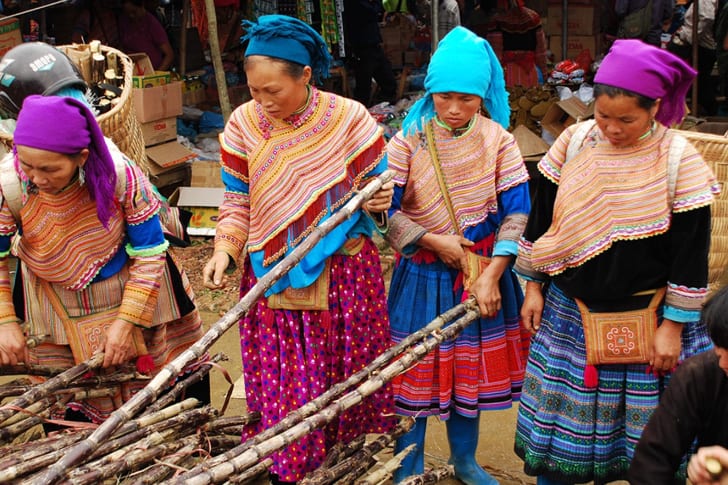
A subgroup of the Miao ethnic minority, the Hmong people have a rich and ancient culture that can be traced back to the 18th century. But their past is also one of struggle, constant persecution, and tragic events. Living in China, Laos, Vietnam, Thailand, and Myanmar, the Hmong never had a place they could properly call their own.
That's probably why they were so open to collaborating with the CIA to fight against the Pathet Lao. To the U.S., they were seen as a vital partner in the on-going war against communism in Southeast Asia. But war is always cruel, and even more when you're on the losing side.
Powerless and Persecuted
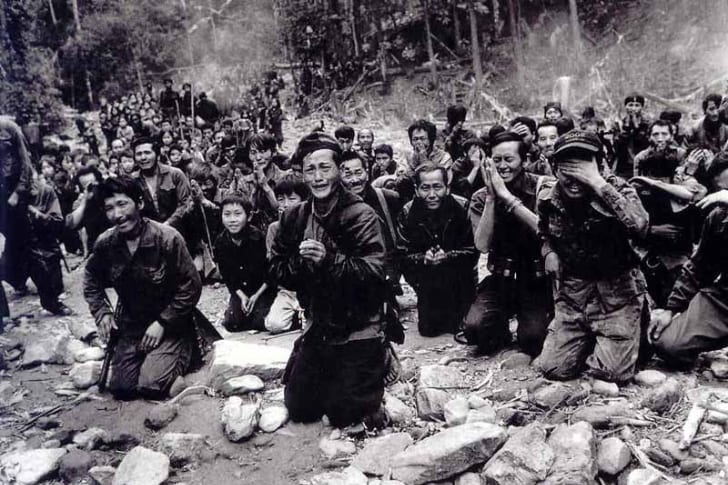
Even though the Hmong people put up a good fight during the Laotian Civil War, they were forced to witness the Pathet Lao's rise to power in 1975. A mere four days after the communist group won the war, Pathet Lao's official newspaper was clear about what should be done with the Hmong: they should be exterminated completely.
Deemed as Laos's traitors now that they'd lost the war, the Hmong were helpless and on the brink of genocide. So the CIA decided to help them by arranging their evacuation. Between 1975 and 1982, over 50,000 Hmong refugees (and other Laotian war victims) were given a chance to restart their lives in America.
Scattered Across the Country
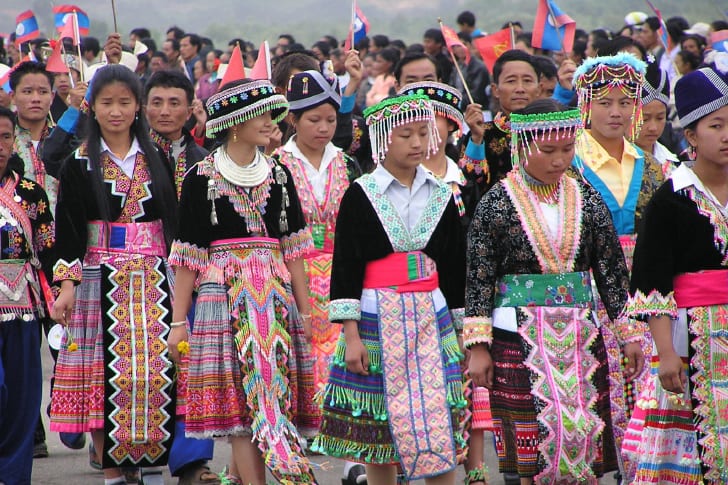
The Hmong people living in the U.S. after the Laotian Civil War's end could consider themselves lucky. They were alive, and they were allowed to recreate their lives in the "land of opportunity." Yet, life wasn't bound to get easier for the Hmong war survivors in the U.S.
They were scattered all across the country, they found it hard to adapt to the Western way of life, and they suffered from gross unemployment levels. They were estranged from their tight community, robbed of their cultural pride, and haunted by the ever-present horrors of the war.
Battlefield Bait?
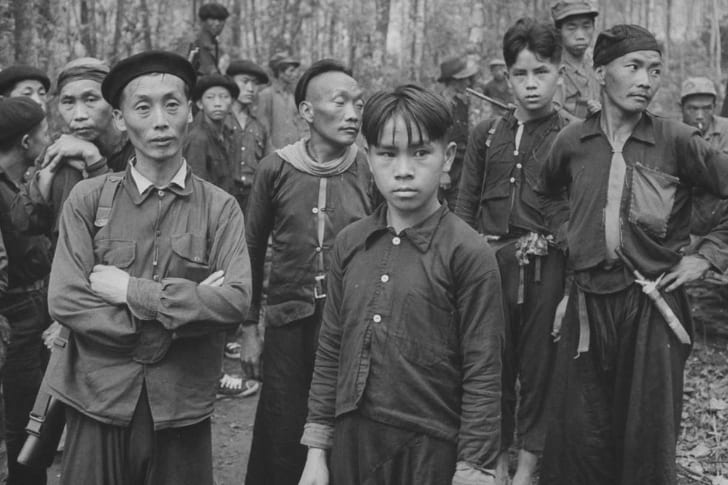
Loyal to the CIA, the Hmong were present in virtually every conflict against communism in the region of Southeast Asia. It wasn't just the Laotian Civil War. Many Hmong refugees living in the U.S. were also present in the Vietnam War, fighting side-by-side with the American army against the brutal North Vietnamese soldiers.
Yet, saying they fought "side-by-side" may not be 100% accurate. As stated by PBS, the Hmong people of the Vietnam War were ten times more likely to die than their American counterparts. Arguably, the effects of the war on communism in Southeast Asia were even worse for the Hmong minority than for the war-torn American veterans who made it back home.
A Suffering That Stays
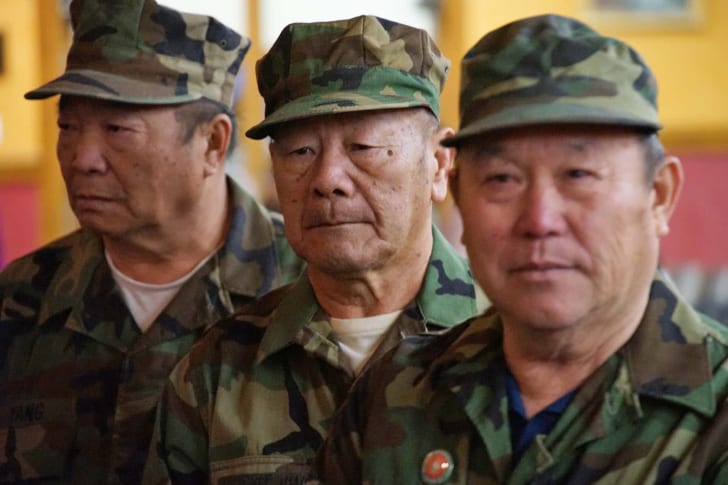
The long-term effects of the war are well documented. Nearly 30% of the male Vietnam War veterans and 27% of the female veterans have experienced post-war PTSD. Not to mention the anxiety, the anger issues, the problems related to other mental health disorders, and... the nightmares.
If it was this hard for the Americans back home, can you imagine how it must've been for the Hmong refugees? The scars of the war were still present in their hearts, and everything around them was new and strange. They missed their culture, and they were isolated from each other, living all across the American continent. Still, their horror was just beginning...
Sleepless Nights In American Soil

Yong Leng Thao was one of the Hmong refugees who was given a chance of starting anew in America. After living in hard conditions in a Thai refugee camp, Thao should be grateful for having access to a home and a bed in the U.S., where he lived with his family.
But while living in America seemed like a fresh start, the nightmares and the wartime's horrific memories were taking their toll on Thao. And one day, Thao went to sleep, only to never wake up again. Lying next to him, his wife mourned his sudden passing. But the strangest thing was that Thao was not the first Hmong refugee to die unexpectedly during sleep.
A Common Nightmare
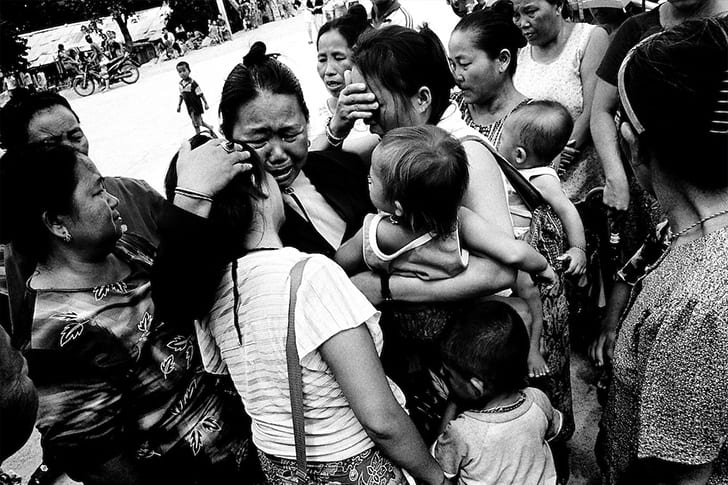
While Thao's case is a mystery in itself, the plot of his sudden death is only about to get thicker because Thao was the fourth documented Hmong man to die without explanation during his sleep in the space of only nine months! Most impressively, this was the 13th sudden death of a Hmong living in the U.S. in the space of three years.
And this is just the record of the Hmong refugees who were living in America; it's possible the same happened to many Hmong who continued to live in Southeast Asia, and it's also likely that some U.S. Hmong deaths were never accounted for. How was this possible?
A News Story
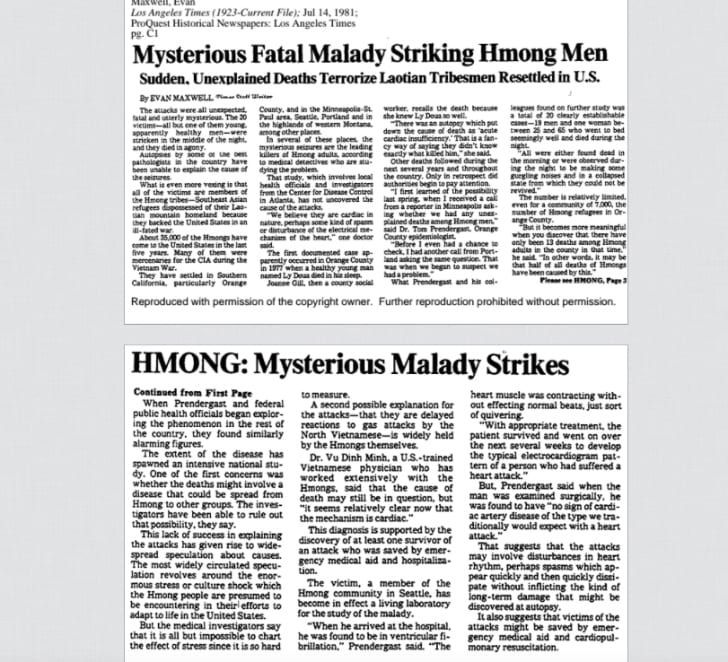
The Hmong people's mysterious sudden deaths made it to a news article published by the L.A. Times in the early '80s. Other newspaper articles of the time mentioned that the same was happening to other Asian, non-Hmong men who were still living in their home countries.
Either way, the 'wow' factor in these articles was the same: the fact that nobody could explain why or how this was happening. Fascinated by this type of story, Wes Craven saw the inspiration for a great horror movie plot in these strange events.
Murdered By Your Nightmares

The case of the Hmong men who died inexplicably while sleeping stirred Wes Craven's imagination. He thought of an evil spirit who could enter people's dreams and actually kill them while in there. Just like the Hmong men, the victims in Craven's story were murdered by their own nightmares.
It's easy to understand why a creative like Craven would develop the interesting plot of A Nightmare on Elm Street out of these baffling, strange news stories. But since we have to assume Freddy Krueger is not real, what was really behind this strange series of tragic events?
Like Something Straight Out of a Horror Flick
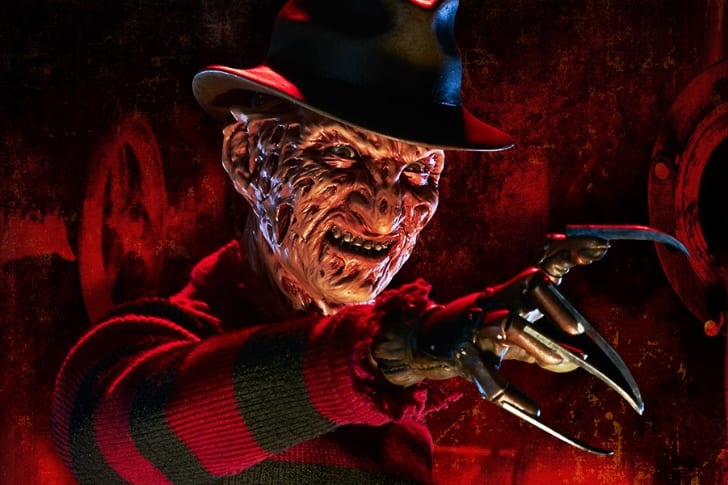
While Craven's film can be connected to the strange case of the Hmong, the article that was directly responsible for inspiring him was actually about a Cambodian child. After surviving the horrors of the Cambodian genocide, the child was afraid of being attacked by evil spirits while sleeping. Sounds familiar, right?
But the strangest thing was that this kid died suddenly while screaming. Fascinatingly, Craven told Vulture magazine that he "died in the middle of a nightmare." After hearing this bone-shivering story, it's really not that hard to think of someone as terrifying as Freddy Krueger. But what was the meaning of all of this?
There Was No Explanation
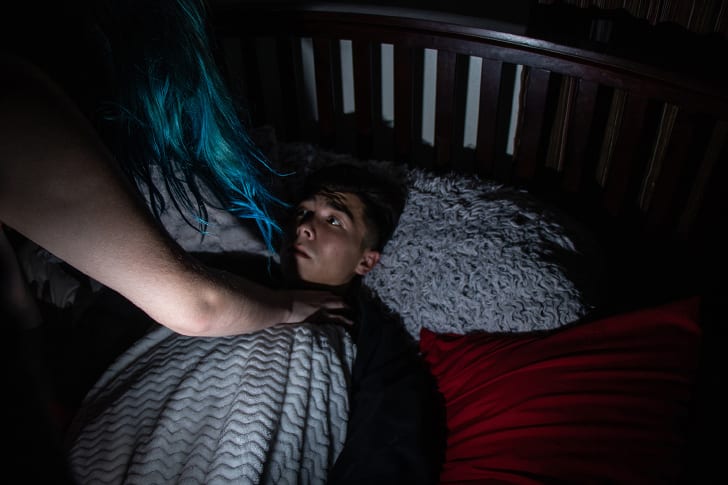
Throughout the '80s, dozens of Asian men, normally aged between 20 and 39 years, are known to have passed away quite inexplicably while sleeping. This was not a coincidence by any means, especially considering almost every one of these young men were directly or indirectly affected by one of the many wars that tore the Asian continent apart during the second half of the 20th century.
But while the public health experts were concerned about these stories, they couldn't find an immediate explanation for the mysterious deaths. Instead, they opted for the easier way out.
Sudden Unexpected Nocturnal Death Syndrome
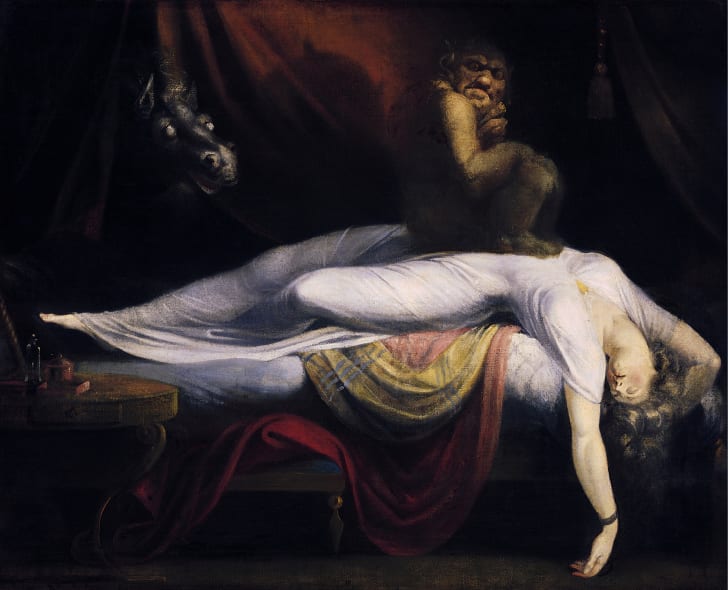
While Sudden Unexpected Nocturnal Death Syndrome (SUNDS) may be a perfect name for what happened to these many young Asian men in the '80s, it was hardly a convincing explanation. SUNDS killed a whopping 117 Hmong men living in the U.S., and only one of these 100-plus documented cases was of a sick man.
The others? Healthy young adult men in their prime, at an average age of 33 years old! Medically, SUNDS provided a vague and unsatisfying explanation for this mysterious scourge. As the journalist Alexis C. Madrigal put it, SUNDS sounded like a "dragon label" that "reeks of defeat" and offers no advancements in terms of diagnosis or cure.
Looking For Answers
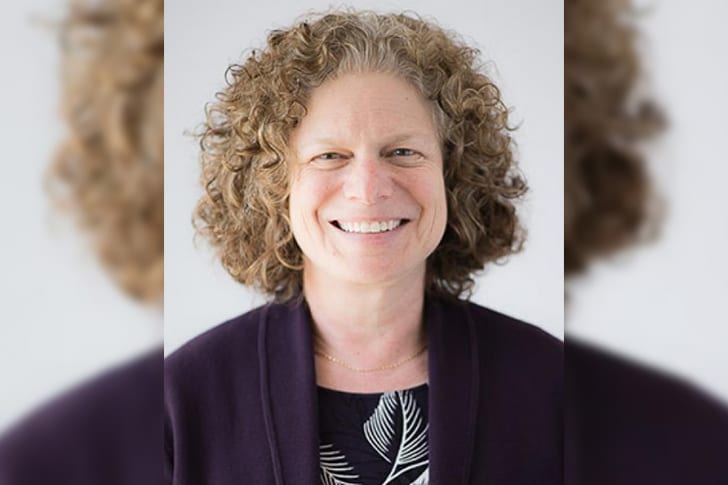
Albeit tragic, the story of the Hmong was a fascinating study case. Contemporary medicine couldn't offer a convincing explanation for the sudden death of so many Southeast Asian men. So, it was up to the author and University of California Professor Shelley R. Adler to find an answer.
Trained in sociocultural gerontology, medical education research, and medical anthropology, Adler was more than prepared to study this seemingly unsolvable mystery. And what she discovered was bound to forever change the way we think about the interaction between our spiritual beliefs and our physical bodies.
Widespread Traditional Beliefs
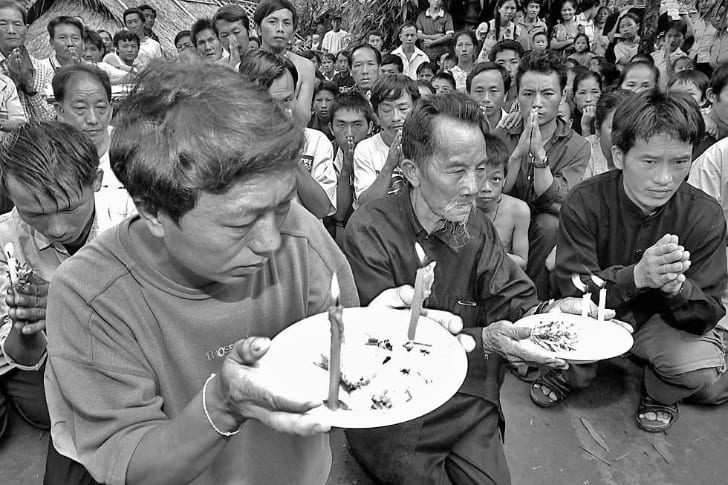
To know more about what happened to the Hmong in the late '70s and '80s, Adler needed to learn about the folklore beliefs surrounding sleep paralysis. It turned out there were multiple references to what Adler called "nocturnal pressing spirit attacks" in traditional cultures, and this was not limited to Southeast Asian countries.
Sleep paralysis is commonly associated with nocturnal evil, and while this "evil" goes by many names, it is essentially the same in most ancient traditions. From the Indonesian digeunton to the Chinese bei gui ya (which means "held by a ghost") to the Old Hag of Newfoundland, in Canada, a clear pattern could be recognized.
The Night-Mare
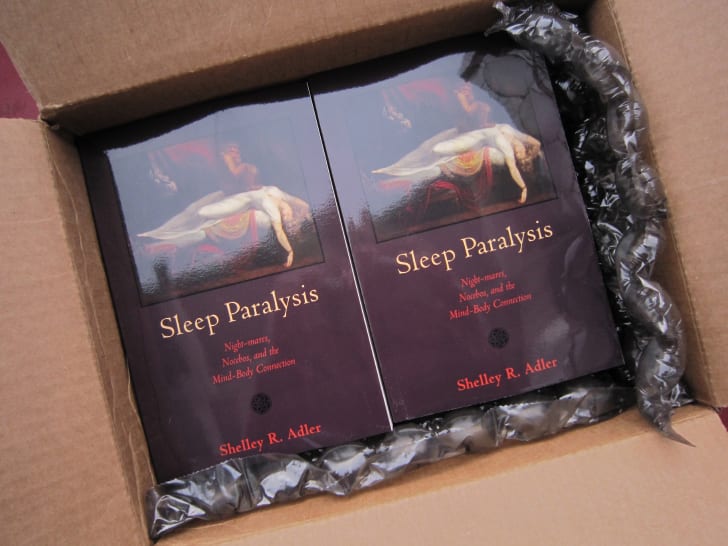
In the Dutch traditional culture, these pressing night spirits were known as nachtmerrie or night-mares. But while the night-mare has many different names, it relates to a single cohesively described experience. Adler learned that many victims of the night-mare describe the sensation of feeling awake and powerless during their sleep.
This fear is often accompanied by textbook medical symptoms, such as difficulty breathing and chest pain. But the worst and scariest part is that the people who experience sleep paralysis often mention the feeling of being near something evil, like an "ominous presence." Does this mean the Hmong were dying in their sleep out of sheer fear?
Sleep Paralysis Doesn't Always Kill
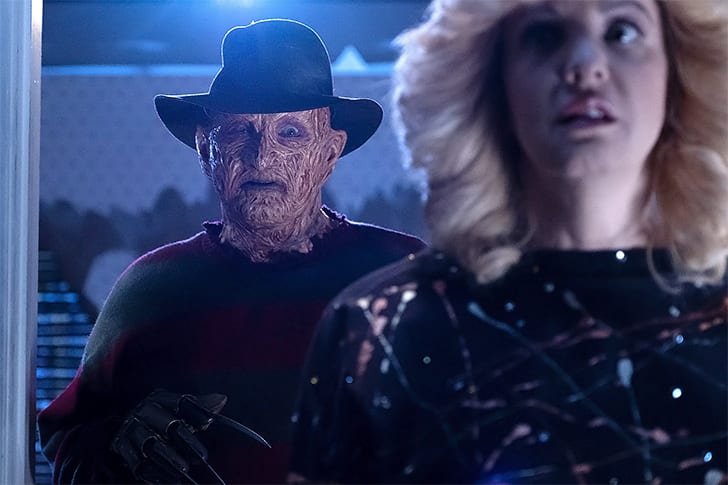
In fact, sleep paralysis rarely results in death. It is a well-known and relatively common phenomenon that affects around 8% of the population. It occurs during the REM sleep stage, in which we're supposed to be dreaming and are effectively paralyzed. The only difference? The people who suffer from this condition often "awake" from their REM state, only to find themselves in a contradictory brain-state that can only be described as a conscious state of paralysis.
To put it simply, sleep paralysis can be defined as a period of time during which a subject is unable to move his muscles but can still experience ocular and respiratory movement. To put it even more simply, it's a little bit like seeing Freddy Krueger in your dreams and being unable to wake up or run away.
A Disease of the Soul?
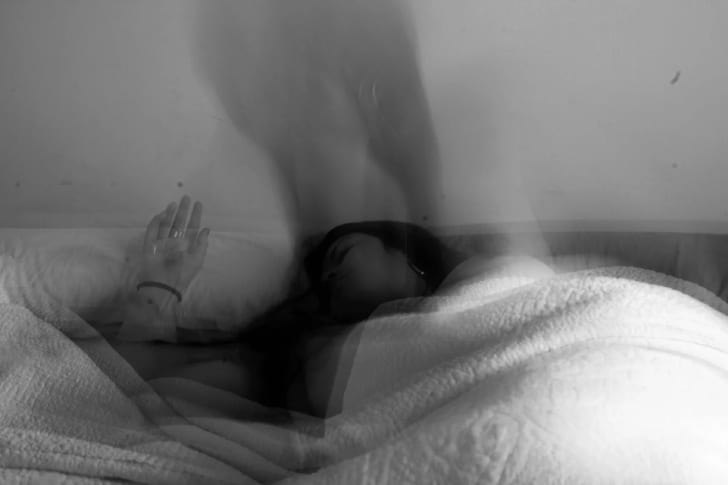
Yes, sleep paralysis is scary. But it's one thing to have a horrible night of sleep and another to die in the interim. While sleep paralysis-induced death could be a perfect description of what happened to the Hmong people, it hardly offered a satisfying explanation to the mystery. So, Adler decided to look at the other side of the matter.
In true anthropological spirit, she analyzed how our deep personal and religious beliefs affect our physical body's behavior. In modern societies, we assume there's no connection between a physical malady and a moral or intellectual dilemma. But could it be otherwise?
Abandoned By The Spirits
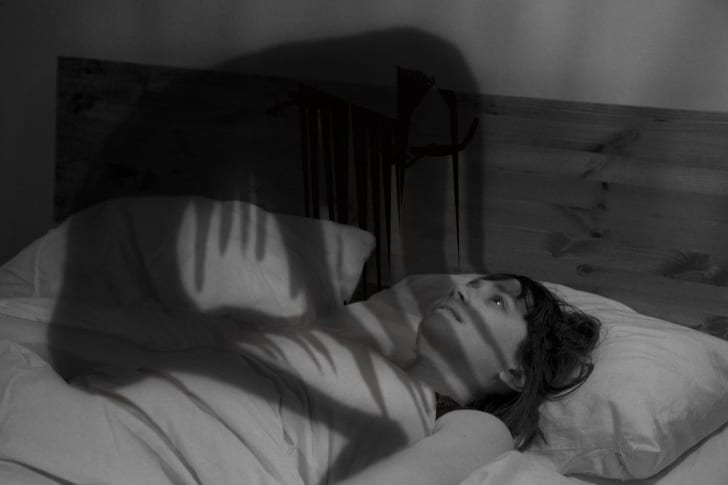
Like most ethnic groups, the Hmong people follow strict religious traditions and rituals. And there's a belief among the Hmong that, if you don't do your religious duties responsibly, the spirits will no longer protect you. So, is it possible that their sudden deaths were related to this abandonment of the spirits?
After all, it wasn't easy for the Hmong to find any free time to worship the spirits during the '70s. Fighting day and night against the communist party in the Laotian Civil War, the Hmong were not only exposed to unspeakable horrors, but they were also forcefully removed from their spiritual roots. This was certain to have a huge impact on their culture, but could it be enough to cause death?
The "Easy" Explanation Doesn't Fit
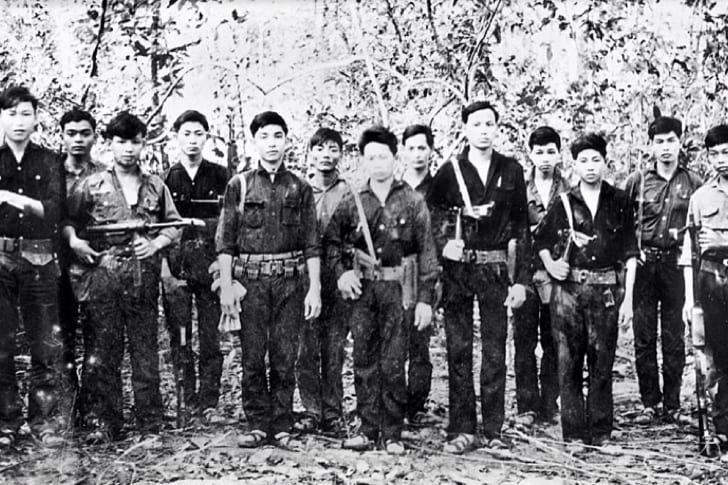
Many horrible things happen during war. And some believed that the sudden deaths of the Hmong people were related to dangerous chemical nerve agents that may have been used during the Vietnam war and other conflicts in Southeast Asia. But while this theory sounds reasonable, it was never confirmed by the physicians.
The use of chemical agents couldn't have explained why this phenomenon affected so many Hmong and so few American Vietnam veterans. Additionally, it did not explain why so many people mentioned the feeling of being close to evil spirits while sleeping.
Killed By Powerful Beliefs
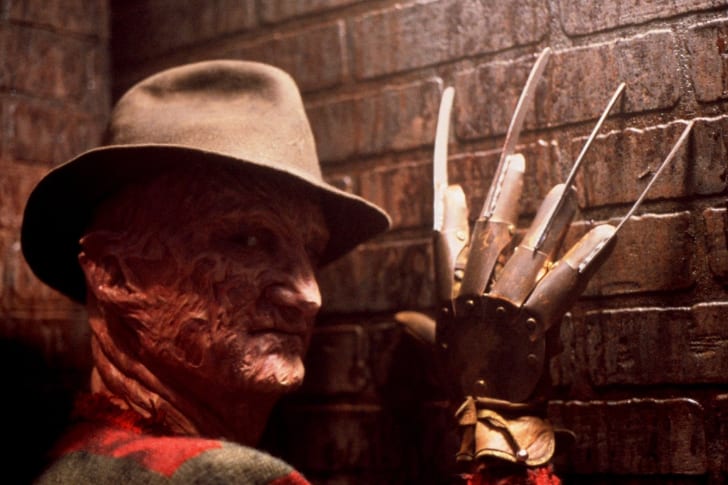
In the slasher masterpiece A Nightmare on Elm Street, American teenagers are visited by the evil spirit of Freddy Krueger and end up dying in real-life after being killed in their dreams. But according to Adler, what happened to the Hmong was different. They weren't killed by an evil dream-walking spirit, but rather by their strong belief that such a spirit exists.
To Adler, the mystery of the Hmong had a simple explanation. When you mix the stress of war and life as a refugee with a strong belief that spirits will visit you at night when you don't follow your religious duties, then you have a reasonable explanation for the phenomenon of the nightmare. But how was this even possible?
How Can We Know For Sure?
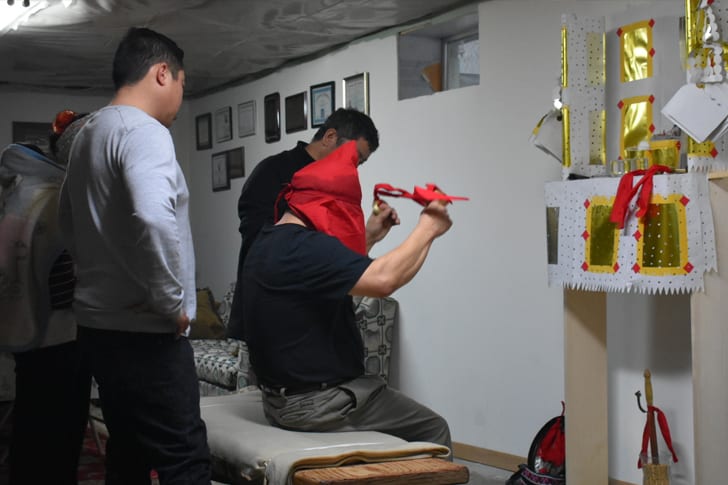
The connection between our beliefs and our bodies is stronger than most assume. Yet, it's tough to study this relation from a medical-scientific point of view. For one, it's tough to assume we can know for sure what other people believe, let alone patients and case studies.
Besides, it's nearly impossible to identify a particular belief in the same way we can recognize a change in blood pressure, heartbeat rate, or any other physically verifiable event. So, is Adler simply making all of this up? Well, not so fast! Because this is when the vital concept of nocebo comes into play...
The "Evil Brother" of the Placebo Effect

Originally, 'placebo' is the word for 'I shall be pleasing,' which comes from the Latin term 'placere' (meaning 'to please'). Besides being vital to ensure the reliability of clinical drug tests, a placebo can also be described as any medicine aimed at increasing a patient's pleasure rather than fixing any given physiological malady.
Nocebo is the less-known "evil brother" of the placebo. The word comes from 'nocere' ('to harm'), and the concept applies perfectly to the Hmong. After all, if our positive beliefs can have a pleasuring effect on our bodies, why wouldn't our negative thoughts have the same impact on our health?
Examples of Nocebo

Nocebo, just like Adler's theories, is hard to study and even harder to methodically document. But some scientific tests have asserted its existence. In one case, patients made to feel anxious before surgery required a larger amount of post-surgery opiates. This meant that their belief that the surgery was dangerous caused their bodies to react differently to the medicine.
In another case, doctors exposed patients who were sensitive to electromagnetic radiation to fake cell phone signals. As a result, such patients suffered from real headaches, ensuring the nocebo effect is as real as any placebo. But that's not all...
The Strange Case of the Chinese Americans

Compelling medical experiments back up nocebo. But can it really lead to death? According to Adler, it can. And to make her point, she uses a statistical fact concerning Chinese Americans. Impressively enough, a team of medical researchers found out Chinese Americans died earlier if they happened to be born under a "bad luck" sign.
In Chinese astrology, signs vary according to year, and some are directly related to specific health issues, like poor lung health. With this in mind, researchers documented that Chinese Americans with respiratory problems and a "bad luck" sign would die an average of five years earlier than other Chinese Americans with the same problems but with a different, "luckier" sign. This can only mean one of two things: either Chinese astrology is factual, and signs do make a difference, or these Chinese Americans were highly constrained by their own belief in traditional Chinese culture.
Could It Be?

Adler's explanation of the Hmong mystery is not a definitive one. Her theory is extremely plausible, but it's not backed up by sufficient hard scientific evidence. Still, she sees the prevalence of the night-mare folklore traditions and the concept of nocebo as enough to deduce that "meaning has biological consequences."
According to Adler, the Hmong died in their sleep, mainly because they were convinced they were going to. And even though external events, such as the war, did play a huge part, the Hmong's deadly night-mares could have been mainly self-induced. To this day, Adler's explanation is still the best offered to this fascinating and still unsolved mystery.
What Do You Think?
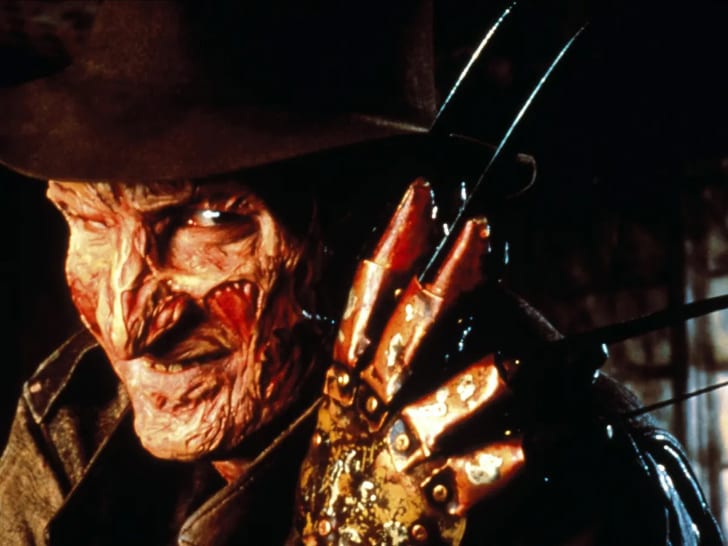
Maybe you're not totally convinced by Adler's version of the story. That's understandable. But if the Hmong people didn't succumb to a strong belief in evil night spirits, how and why were they dying in their sleep by the hundreds in the late '70s and early '80s? How is it possible that something as strange and terrifying as this has happened?
To this day, the mystery of the Hmong is still a strange, terrifying, and mostly unsolved one. And as far as we know, Adler's explanation remains the best around. But, for what it's worth, the Hmong's tragic case has at least inspired the creation of one of the most popular and iconic horror movies of all time. And now that you know the real story behind Elm Street, there's a good chance you'll find the movie even scarier! But please remember: just to stay safe, try not to think of evil night spirits the next time you go to bed...
